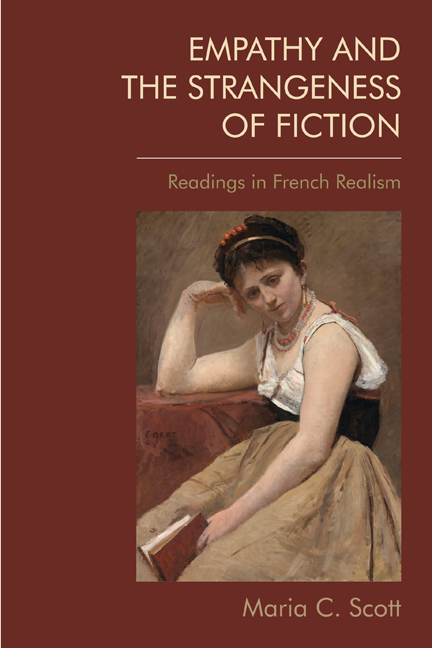Book contents
- Frontmatter
- Contents
- Dedication
- 1 Does Reading Fiction Boost Empathy? Psychological Approaches
- 2 Literary Approaches to Empathy
- 3 Fictional Strangers and the Strangeness of Fiction
- 4 Balzac: The Limits of Transparency and the Dangers of Opacity
- 5 Stendhal and the Two Opposing Demands
- 6 Sand and the Necessity of Suspicion
- 7 Towards an Empathetic Ethics of Fiction-Reading
- Bibliography
- Index
6 - Sand and the Necessity of Suspicion
Published online by Cambridge University Press: 17 October 2020
- Frontmatter
- Contents
- Dedication
- 1 Does Reading Fiction Boost Empathy? Psychological Approaches
- 2 Literary Approaches to Empathy
- 3 Fictional Strangers and the Strangeness of Fiction
- 4 Balzac: The Limits of Transparency and the Dangers of Opacity
- 5 Stendhal and the Two Opposing Demands
- 6 Sand and the Necessity of Suspicion
- 7 Towards an Empathetic Ethics of Fiction-Reading
- Bibliography
- Index
Summary
Of all of George Sand's novels, only one– her first as a solo author– can be considered predominantly realist in its style, even if it is true that aspects of this first novel also undermine its realism. From its first chapter, Indiana presents a world that is, ostensibly at least, legible in its every detail, not least because it is mediated by a narrator who adopts the recognisably all-knowing and seductive tone of the Balzacian omniscient narrator. Both narrator and characters regularly decipher facial expressions and the messages conveyed by glances or bodily movement, and in fact the performance of, and obstacles to, mind-reading are central to the novel's plot. The novel also makes a theme of narrative seduction, in its depiction of the charming but duplicitous Raymon de Ramière. This chapter will argue that Indiana both suggests that narrative seduction is to be resisted and highlights the limits of mind-reading.
There are two very obvious figures of the stranger in Indiana: both the eponymous heroine and Noun, her childhood companion and maid, are designated as ‘créoles’ (creoles) from Île Bourbon (now Réunion). Indiana is of European origin, her father having moved from Spain to the French colony, while there are numerous suggestions that Noun is of African origin. In Sand's representation, both heroines are perceived by other characters as foreign to different degrees. These figures will not be the main focus of study in this chapter, however, because there are two other stranger figures who are more closely associated in the novel with pretence, and who might therefore serve as more appropriate figures of fiction in the text.
The ability to seduce others is particularly closely linked, in this novel, to the ability to arouse the sympathy of others. One male protagonist has no difficulties in attracting either erotic partners or friends, while the other is defined by his lack of erotic charm as well as by his inability to inspire any feelings of sympathy in those around him. This chapter will begin by arguing that the character of Raymon, in Indiana, is one of two fiction-connoted figures of the stranger in the novel, and that he embodies the dangerous seductions of fiction. Indiana and Noun both fall for him; only the former survives the encounter, due at least in part to a capacity for resistance that appears to be innate.
- Type
- Chapter
- Information
- Empathy and the Strangeness of FictionReadings in French Realism, pp. 145 - 199Publisher: Edinburgh University PressPrint publication year: 2020



